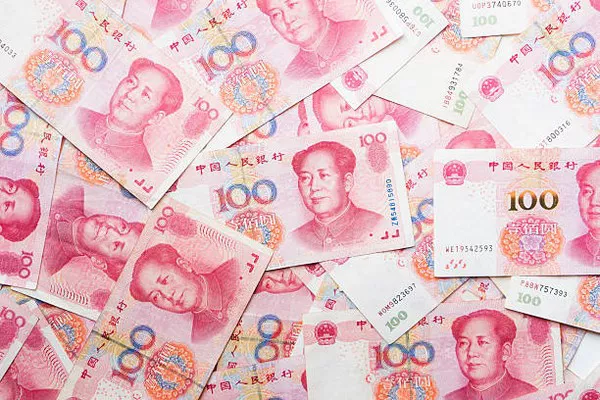China’s economic rise over the past few decades has been nothing short of remarkable, and with it, the significance of its currency has grown immensely. Understanding what Chinese money is called involves delving into the intricacies of the country’s financial system and the role of its official currency, the Renminbi (RMB). In this article, we will explore the origins of the Renminbi, its components, and its evolving role in the global economy.
The Renminbi: A Historical Perspective
The term “Renminbi” translates to “People’s Currency” in English, reflecting China’s communist ideology. The Renminbi has a rich history dating back to the early days of the People’s Republic of China (PRC), established in 1949. Initially, the Renminbi was issued by the People’s Bank of China (PBOC), the country’s central bank, to replace the various currencies circulating in different regions.
The Renminbi underwent significant changes during the economic reforms initiated by Deng Xiaoping in the late 1970s. One of the pivotal reforms was the introduction of the “dual-track” system, where a planned economy coexisted with elements of a market economy. As part of this shift, the Renminbi was pegged to the U.S. dollar at a fixed exchange rate, a strategy that fueled China’s export-led growth.
Yuan: The Primary Unit of Renminbi
The Renminbi is denominated in units called “yuan,” represented by the symbol ¥. The term “yuan” is often used interchangeably with “Renminbi” in everyday language, but it’s essential to recognize the distinction. While Renminbi refers to the overall currency, yuan represents the primary unit of that currency.
To further complicate matters, the Renminbi is subdivided into smaller units, including the jiao and fen. One yuan is equivalent to ten jiao, and each jiao is further divided into ten fen. However, due to the diminishing value of fen in modern transactions, they are rarely used today, and prices are typically quoted in yuan or jiao.
Renminbi as Legal Tender
The Renminbi is recognized as the official legal tender in the People’s Republic of China. It is used for all transactions within the country, from daily purchases to major business dealings. In recent years, China has taken steps to internationalize the Renminbi, encouraging its use in international trade and finance.
In 2016, the International Monetary Fund (IMF) included the Chinese yuan in the basket of currencies that make up the Special Drawing Rights (SDR). This move acknowledged the Renminbi’s growing importance in the global economy and marked a significant step towards its recognition as a global reserve currency.
Globalization of the Renminbi
China’s rapid economic growth and its increasing role in global trade have led to a greater internationalization of the Renminbi. The Chinese government has actively promoted the use of its currency in cross-border trade settlements and investment transactions.
One of the key initiatives driving the globalization of the Renminbi is the establishment of offshore Renminbi centers, commonly referred to as CNH markets. These markets allow foreign companies to settle trade transactions in Renminbi, reducing their dependence on the U.S. dollar and enhancing China’s influence in the global financial landscape.
In addition, the Belt and Road Initiative (BRI), China’s ambitious infrastructure and economic development project, has played a significant role in promoting the use of the Renminbi. Many countries participating in the BRI have embraced the Renminbi for trade and investment, further cementing its position on the international stage.
Renminbi Exchange Rate Mechanism
China’s exchange rate mechanism has been a subject of international scrutiny and discussion. Historically, the Renminbi was pegged to the U.S. dollar, providing Chinese exporters with a competitive advantage by keeping their products relatively inexpensive in foreign markets.
However, in 2005, China introduced a managed floating exchange rate system, allowing the Renminbi to fluctuate within a narrow band against a basket of currencies. This move was a response to global pressure, particularly from the United States, which argued that an undervalued Renminbi was contributing to global trade imbalances.
The People’s Bank of China (PBOC) plays a crucial role in determining the daily reference rate for the Renminbi against the U.S. dollar. While the currency is allowed to fluctuate within a specified range, the PBOC maintains some degree of control to prevent excessive volatility.
Conclusion
In conclusion, understanding what Chinese money is called goes beyond a simple label; it involves unraveling the complexities of the Renminbi and its role in the global economy. The Renminbi, with the yuan as its primary unit, has undergone significant transformations throughout China’s economic history. From its origins as a means to consolidate various regional currencies to its current status as an internationally recognized currency, the Renminbi reflects the economic prowess of the world’s most populous nation.
As China continues to assert its influence in global trade and finance, the Renminbi is poised to play an increasingly prominent role in the international monetary system. The ongoing efforts to internationalize the Renminbi, coupled with China’s strategic initiatives like the Belt and Road Initiative, contribute to the currency’s growing significance on the world stage. As we witness the evolution of the Renminbi, it becomes evident that understanding Chinese money is not only about currency denominations but also about grasping the broader economic and geopolitical dynamics shaping the 21st century.


